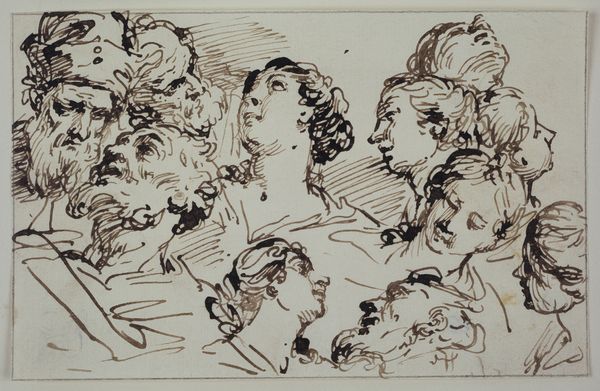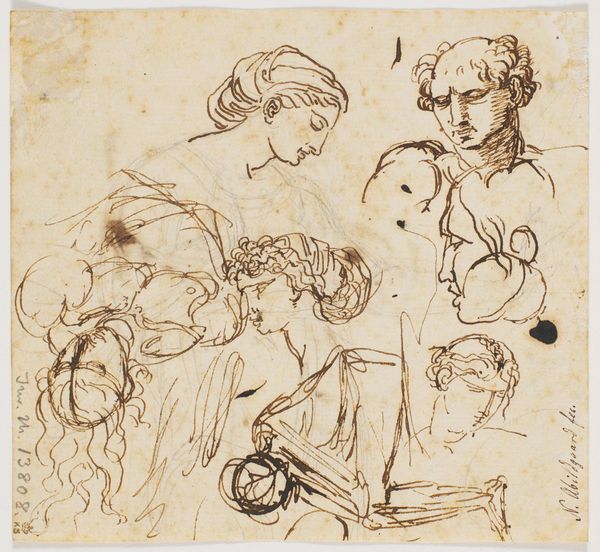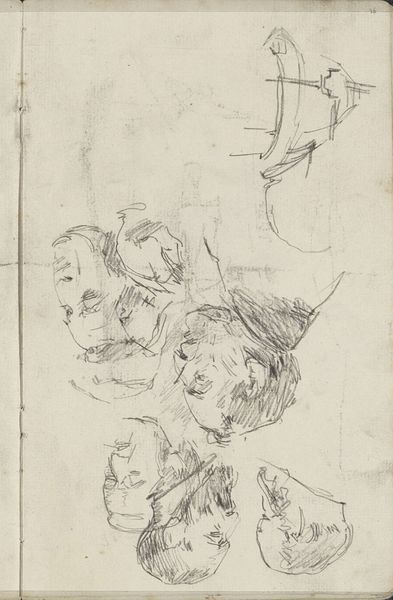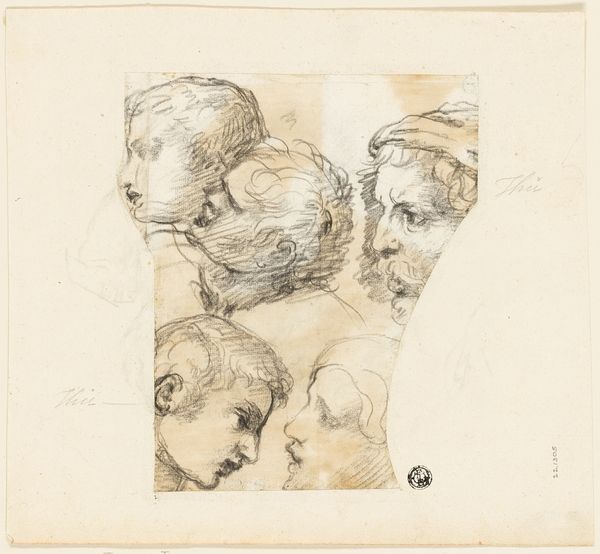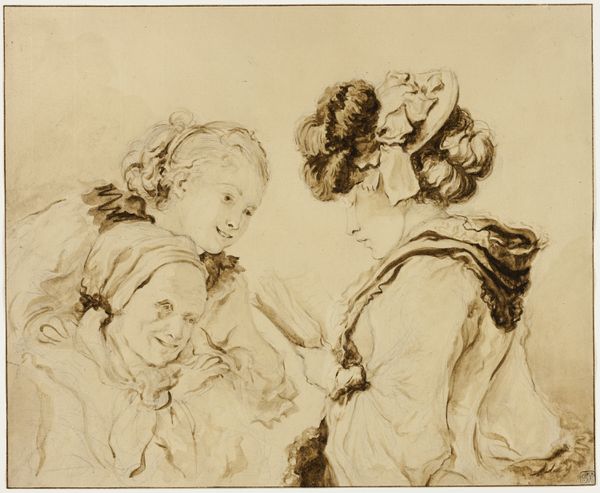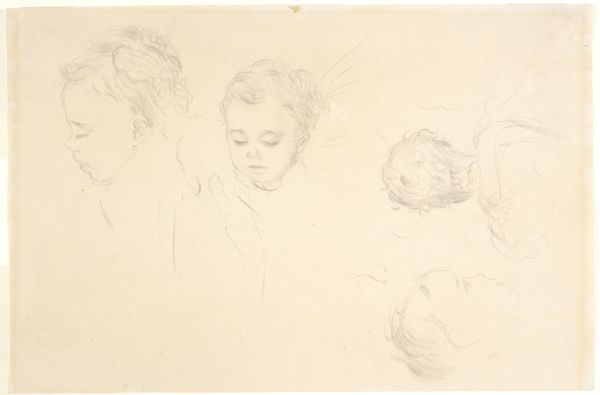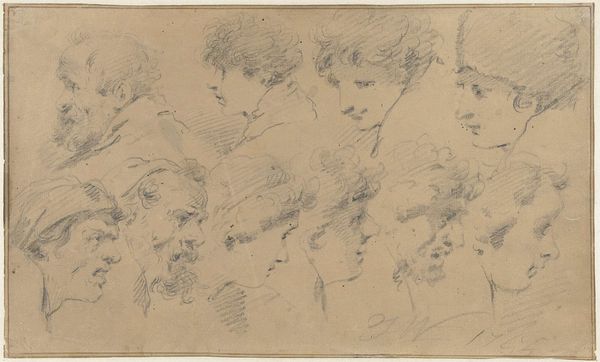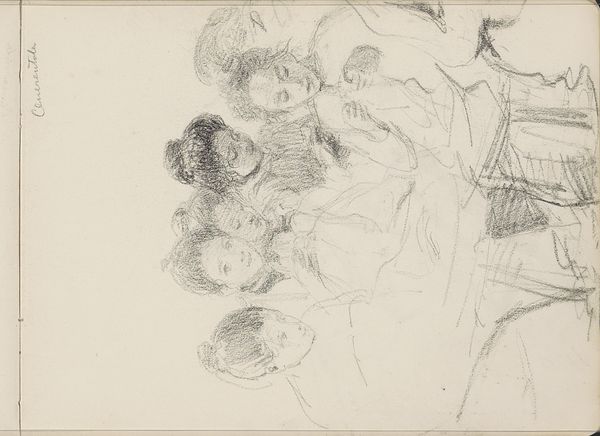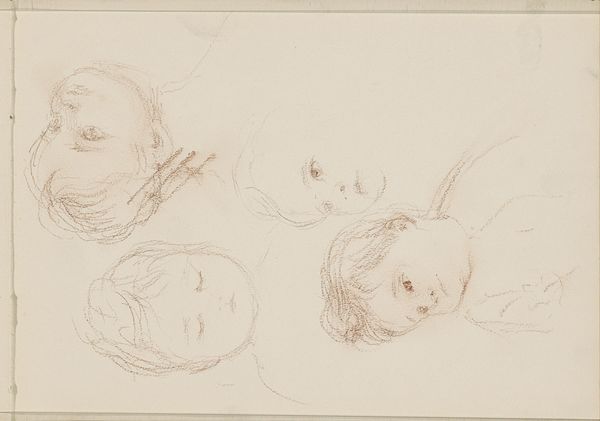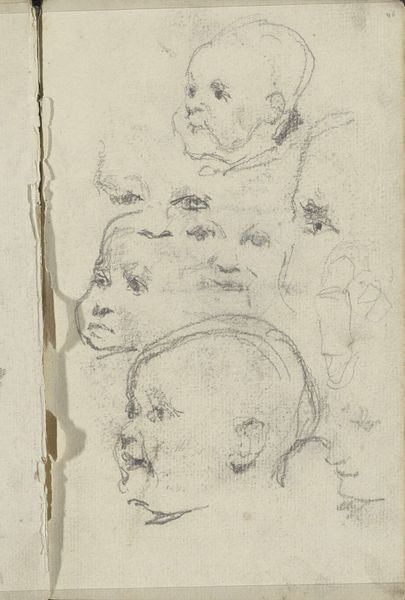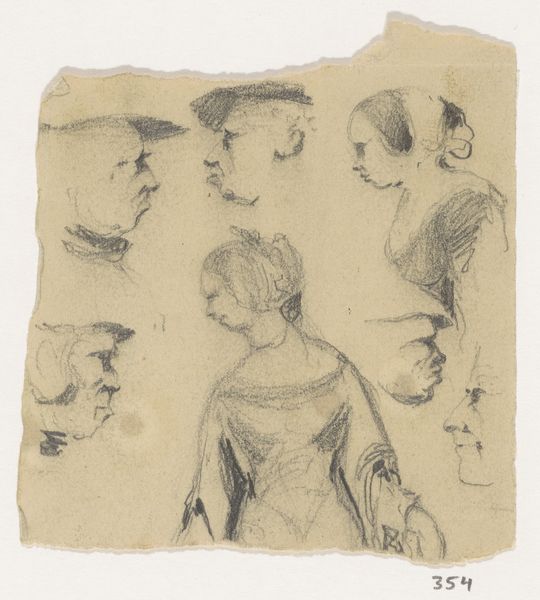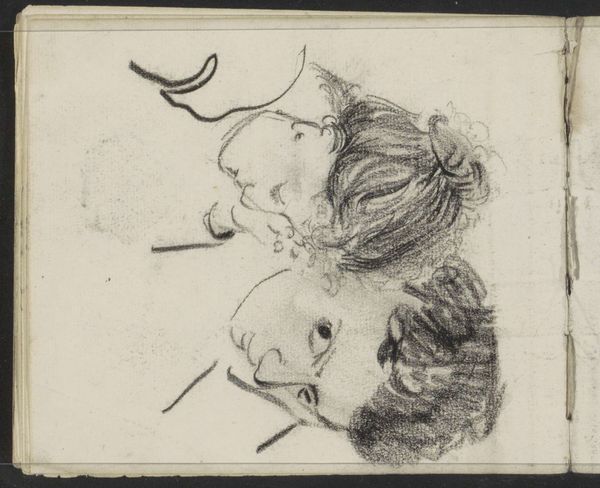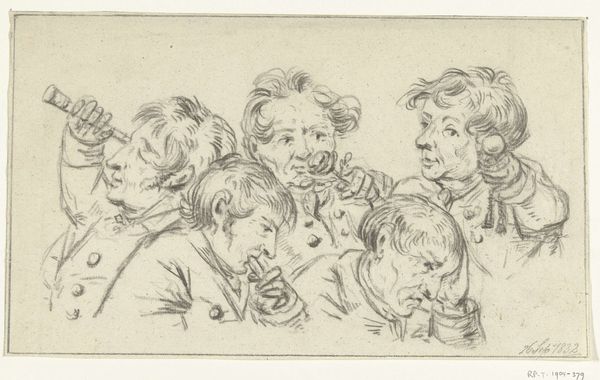
drawing, ink
#
portrait
#
drawing
#
baroque
#
figuration
#
ink
Copyright: Public Domain
Curator: Jacob de Wit's drawing, "Five angel heads in clouds", now in the Städel Museum, presents us with a fascinating study in ink. What strikes you most about it? Editor: The economy of means. The artist conjures up something so evocative with so little—it's essentially just wash and line, but it creates such a sense of volume and implied texture in the curls and chubby faces. It makes you wonder what paper and ink he had on hand to achieve these effects. Curator: Indeed. Consider the baroque dynamism suggested through the compositional arrangement. The faces, caught in fleeting expressions, along with the arrangement and distribution of the masses, give the work a sense of otherworldly movement. Note how the use of chiaroscuro amplifies this sense of ethereal motion. Editor: And each little head must have required study, repeated drawings, to become realized. Was this a practice piece, a commission draft, or did he intend it as its own artwork? You see how the individual materials—the paper reacting to the ink wash—influence the subject’s presentation; it shapes and blurs, mirroring cloud-like ethereal figures. Curator: Perhaps both an end in itself and a study. Given de Wit's larger output, particularly his ceiling paintings, we can surmise that these drawings allowed him to explore the rendering of such figures and compositions, preparatory to other large-scale projects. Note the varied angles and tonal experiments within this single drawing, it functions almost like a mood board. Editor: These angels definitely possess a material presence despite their supposed immateriality. They're not just theological concepts but physical forms achieved through de Wit's labour, skill, and the behavior of the ink and paper themselves. Curator: Very insightful. We might reflect on how this single drawing showcases the artistic and intellectual framework of 18th-century art. It highlights the exploration of form, expression, and theological considerations within a purely aesthetic investigation. Editor: Absolutely. The materiality mediates not just the artmaking process, but even something intangible like divine representation, framing ideas of the heavenly with terrestrial considerations of cost and craft. Curator: Thank you. Your perspective enriches the dialogue between object and viewer. Editor: And yours frames the importance of both subject and skill.
Comments
No comments
Be the first to comment and join the conversation on the ultimate creative platform.
